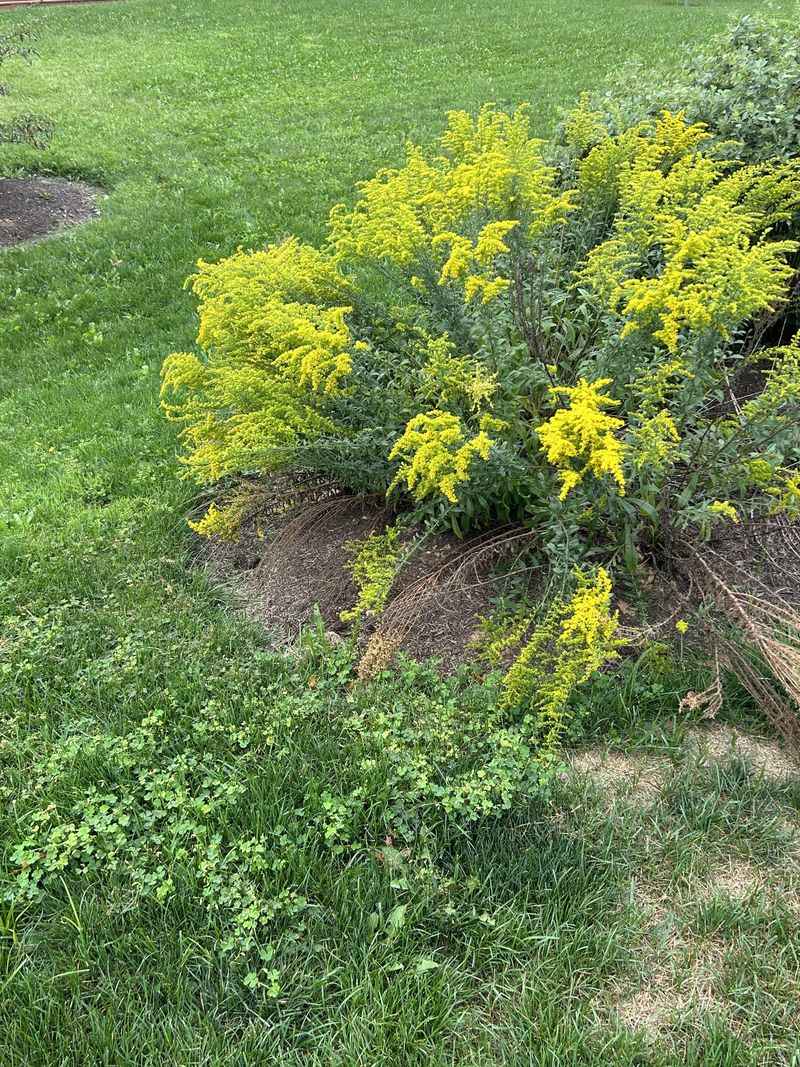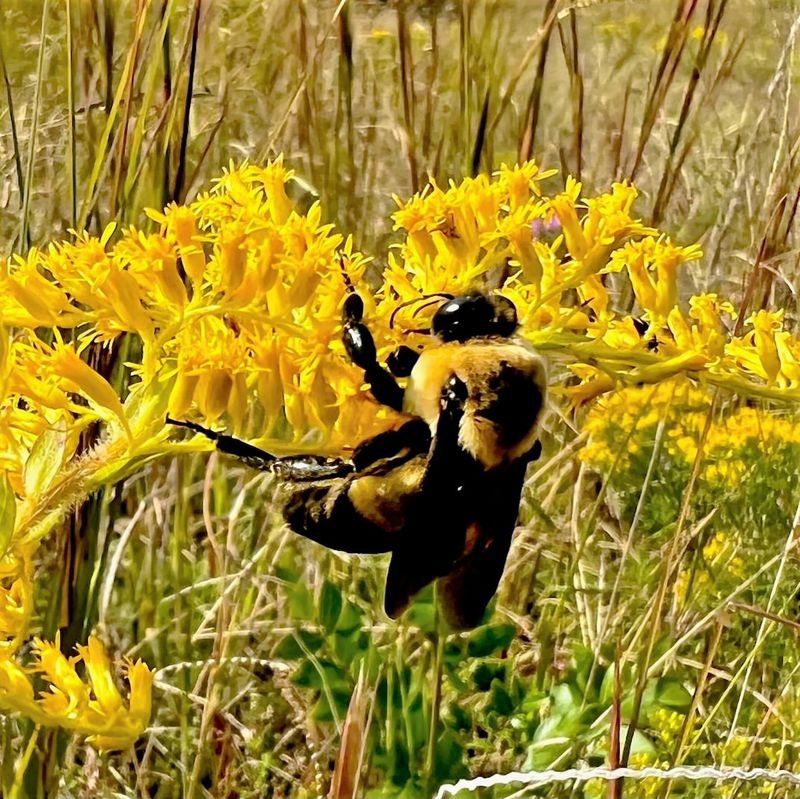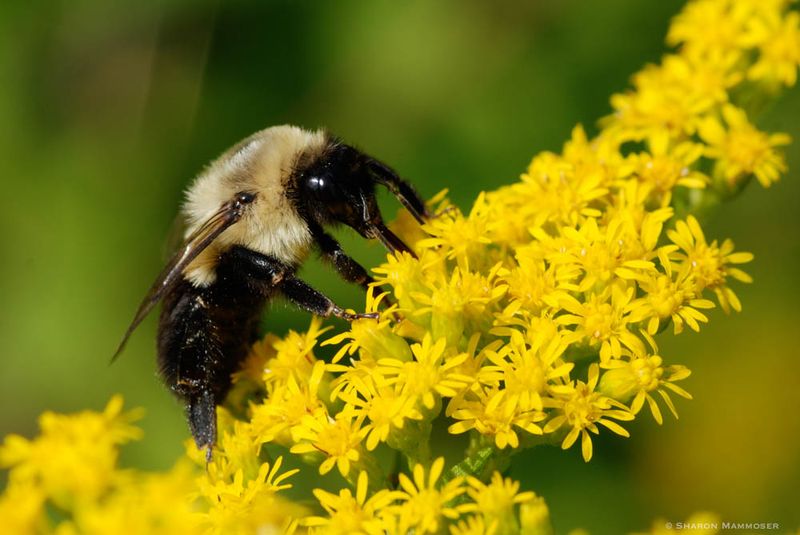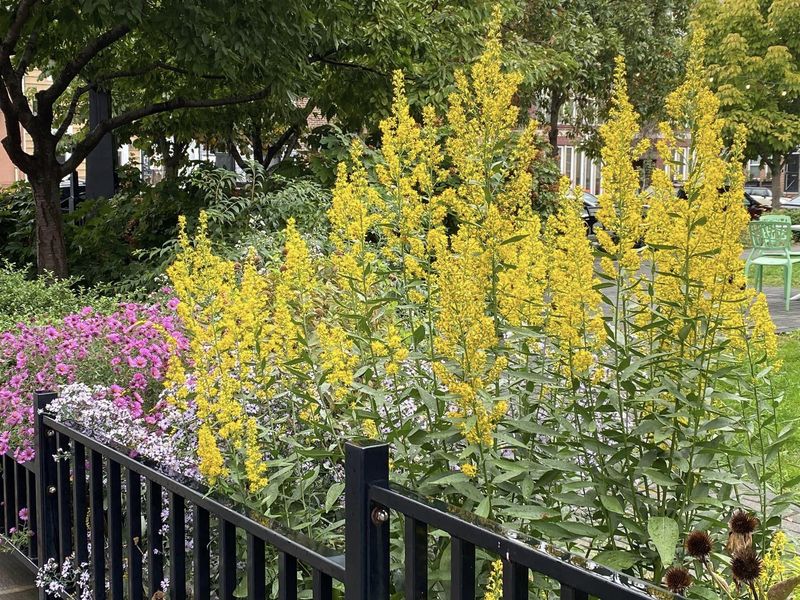Pollinators don’t just show up by chance—some plants work overtime to keep them coming back from summer through the final days of fall. One Virginia native stands out for offering steady nectar when many garden blooms fade.
It supports bees right up to the first frost and brings bright seasonal color to fields, roadsides, and backyard beds. That long-lasting pollinator magnet is goldenrod.
1. Goldenrod Blooms When Bees Need It Most
Late summer and fall in Virginia mark a challenging period for pollinators searching for food sources. Goldenrod bursts into bloom precisely when many other flowers have finished their growing season, providing essential nectar and pollen.
Bees depend on this golden treasure to build up energy reserves before winter arrives. Without goldenrod, many bee populations would struggle to survive the colder months ahead.
Watching bees work goldenrod flowers shows nature’s perfect timing in action.
2. It’s Not The Allergy Culprit You Think
Ragweed gets a free pass while goldenrod takes the blame for fall allergies, but this is completely unfair. Both plants bloom at the same time, yet ragweed produces lightweight pollen that floats through the air.
Goldenrod pollen is heavy and sticky, designed for insect transport rather than wind dispersal. Your sneezing and itchy eyes come from invisible ragweed, not the showy yellow goldenrod.
Next time you see goldenrod, remember it’s innocent!
3. Virginia Is Home To Multiple Goldenrod Species
Over 20 different goldenrod species grow naturally throughout Virginia’s diverse landscapes. Tall goldenrod, early goldenrod, and gray goldenrod each have unique characteristics and preferred habitats.
Some thrive in sunny meadows while others prefer woodland edges or rocky slopes. Learning to identify different species adds an exciting challenge for nature enthusiasts exploring Virginia’s parks and trails.
Each variety contributes to the state’s rich biodiversity and supports local pollinator communities in slightly different ways.
4. Native Americans Used Goldenrod As Medicine
Long before modern pharmacies existed, indigenous peoples recognized goldenrod’s healing properties. They brewed teas from leaves and flowers to treat sore throats, fever, and digestive troubles.
Some tribes applied crushed goldenrod to wounds and insect bites for its anti-inflammatory effects. Colonial settlers learned these remedies and incorporated goldenrod into their own medical practices.
Today, herbalists still value goldenrod for supporting kidney and urinary tract health naturally.
5. Goldenrod Supports More Than Just Honeybees
While honeybees certainly visit goldenrod, native bees are the real stars of this pollinator party. Bumblebees, sweat bees, mining bees, and countless other species rely heavily on goldenrod’s abundant resources.
Butterflies, moths, beetles, and beneficial wasps also frequent these golden blooms. A single goldenrod patch can support dozens of different pollinator species simultaneously.
Planting goldenrod in your Virginia garden creates a bustling hub of beneficial insect activity throughout autumn.
6. Growing Goldenrod Benefits Your Garden Ecosystem
Adding goldenrod to your Virginia landscape provides far more benefits than just pretty flowers. Its deep roots prevent soil erosion and improve soil structure over time.
Goldenrod attracts beneficial predatory insects that help control garden pests naturally. Birds feast on goldenrod seeds throughout winter, adding another layer of wildlife value.
Best of all, goldenrod requires virtually no maintenance once established, thriving in poor soil and drought conditions where other plants might fail.







